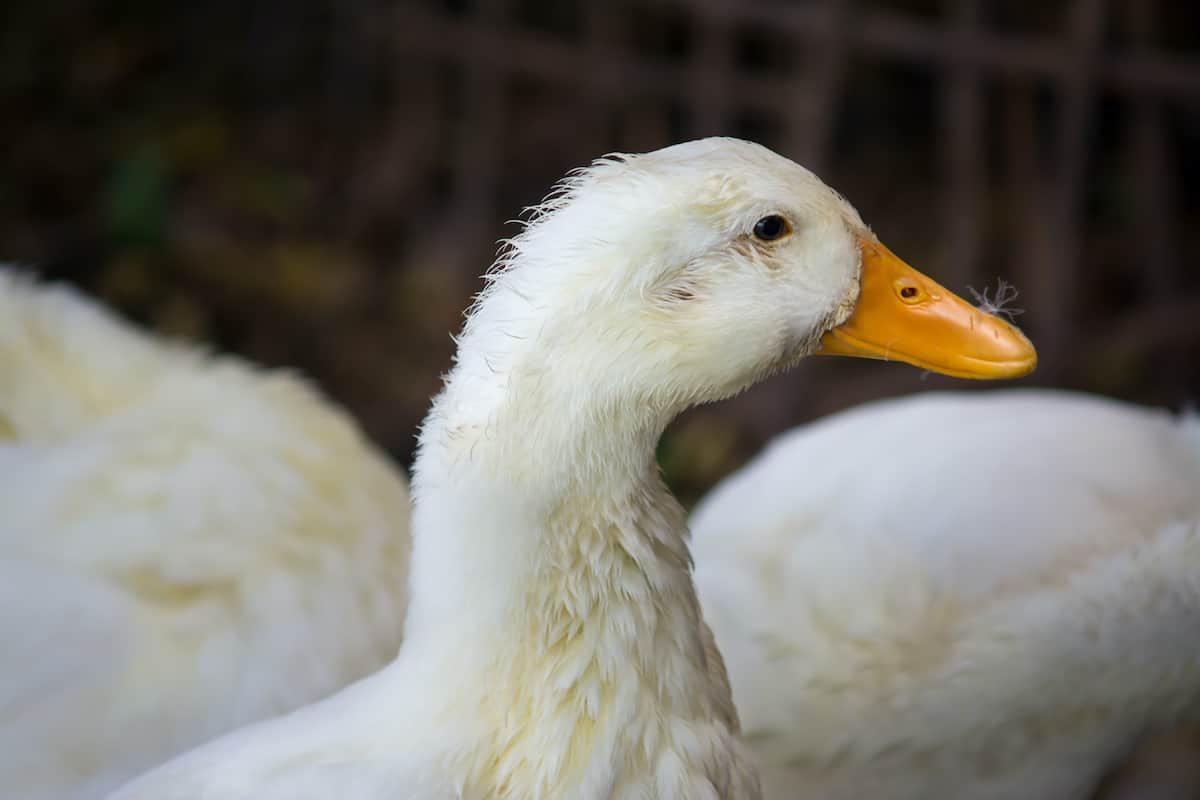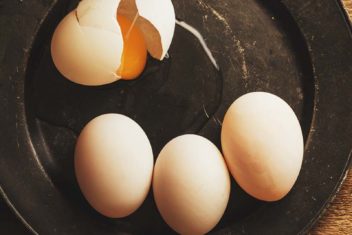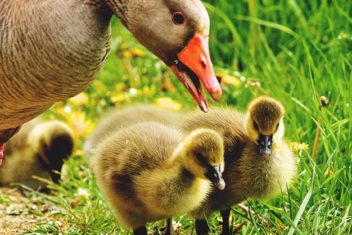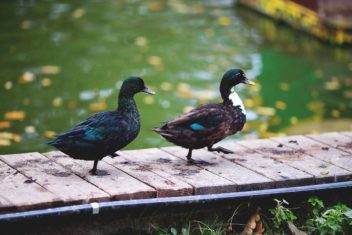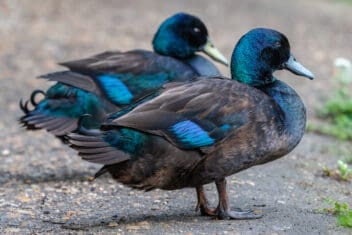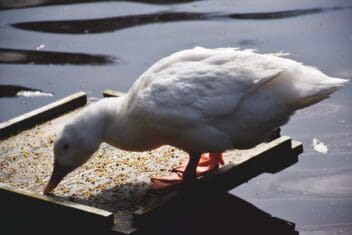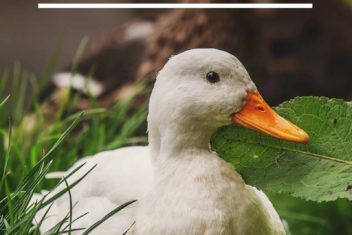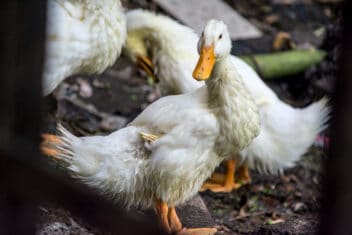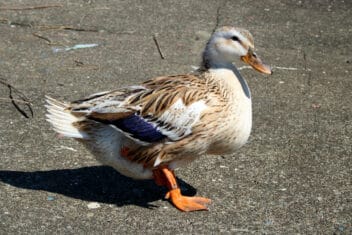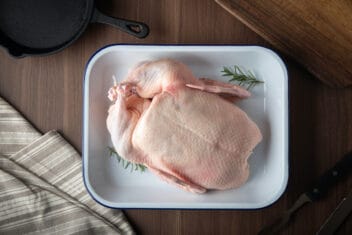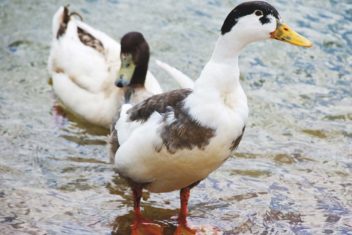Ducks are one of the most wonderful homestead livestock options. They are beautiful. They make a lot of manure that is perfect for restoring degraded soil. Ducks are easy to herd, require minimal shelter, and can lay incredibly rich, nutritious eggs.
Additionally, if you breed ducks, they are an excellent potential meat source even on small homesteads. Ducks are also so hardy that they barely ever have health problems.
There is one thing you need to regularly watch out for, particularly with ducklings. That’s niacin deficiency.
It can be a debilitating and deadly problem if not prevented or caught early. Thankfully, it’s quite easy to avoid if you know a few things about ducks’ niacin needs.
What is Niacin?
Niacin, also called vitamin B3, is a critical nutrient that helps the body convert food to energy that can be used by cells. Cells, in turn, use that energy to build body tissues, bones, and more.
All livestock, and humans, have daily niacin needs. When the body doesn’t get enough, various problems and symptoms will occur. For example, in humans, a lack of niacin could lead to fatigue, skin problems, headaches, depression, and even hallucinations.
Niacin and Tryptophan
Thankfully, our human diets tend to be niacin rich. Plus, our bodies can make niacin from an amino acid called tryptophan. Especially for us homesteaders, we tend to eat a lot of tryptophan-rich foods daily like dairy products, bread, eggs, chicken, turkey, and chocolate.
(Okay, maybe not all homesteaders eat chocolate daily. However, if you wanted a reason to do so, tryptophan is as good as any!)
Ducks, however, don’t seem to have the same efficient capacity to manufacture niacin from tryptophan. Some ducks may make niacin from tryptophan just fine. However, others aren’t able to. This might be genetic, be related to each duck’s microbiome, or have something to do with liver functions.
We don’t exactly know where the issue lies. However, the available research suggests ducks in confinement really need both supplemental niacin and tryptophan for ideal development and well-being.
The good news is that ducks require about the same levels of tryptophan as just about all other poultry. So, in that respect, any kind of formulated poultry feed will work for ducks too.
Ducks and Niacin
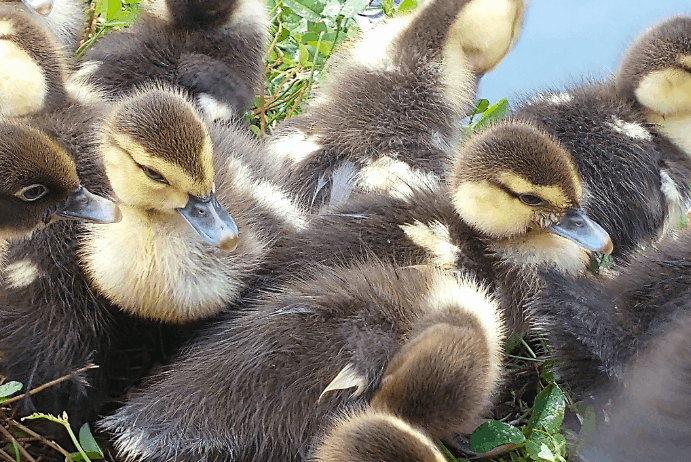
Niacin, however, is a different story. Ducks need more of it than other kinds of poultry require. So, if you tried to raise ducklings on your standard chick starter, you could run into niacin deficiencies in some, or all, of your ducklings.
To ensure your ducks get enough niacin each day, you will have to offer them feed formulated with the extra niacin ducks require. I’ll share the details on how to do that, but before I do let’s talk about what happens when ducks don’t get adequate niacin.
Niacin Deficiency in Ducks
Niacin deficiency can theoretically happen to ducks of any age. Overall, though, it’s much more likely to occur in ducklings.
1. Duckling Niacin Deficiencies
Ducklings grow extremely quickly during their first 8 weeks of life. To see exactly how big that transformation is, watch this video.
Their accelerated growth rate means their cells are constantly at work making new muscle tissue and increasing bone mass during that time. That requires a steady supply of high levels of niacin over their entire rapid development period.
– When Can Deficiency Start?
Ducklings are generally born with a 2-3 day supply of niacin in reserve from the hatching process. As soon as that runs out though, niacin deficiencies can start manifesting as visible symptoms.
That means you can see symptoms as early as the first week of life.
– Symptoms of Niacin Deficiency
Niacin deficiency starts as lethargy and loss of appetite. Deficient ducklings may sit apart from the group, make fewer visits to the food bowl, and gain weight more slowly.
Once the process starts, other physical signs manifest quickly. The most obvious is bowing of the legs and fattening of the hocks. Then, if the condition progresses, ducklings won’t be able to walk.
If left untreated, ducklings will eventually die of malnutrition. If treated in the late stages, the duckling can recover but will suffer lifelong lameness and other possible health problems. If caught early at the first signs of leg bowing, ducklings can usually recover and enjoy long, healthy lives.
Of course, the best approach is to avoid niacin deficiency in the first place!
2. Mature Duck Niacin Deficiency
Mature ducks also require daily doses of niacin just like humans and chickens do. There is much less documentation on niacin needs and deficiency after those early developmental phases.
Generally, most duck keepers agree that mature ducks can stay perfectly healthy on commercial chicken feed and a little pasture access. Layer chicken feed often comes standard with 30mg/kg of niacin and sometimes a bit more.
So, it’s probably that mature duck niacin needs align closely to mature chicken needs. Also, since ducks are excellent foragers, if they do have higher niacin requirements than chickens, they are likely also good at finding sufficient sources in nature.
Niacin Administration
Now that you know how important niacin is during duckling development and after, let’s get into the nitty-gritty details of making sure they get it.
1. Niacin Dosing
The exact amount of niacin needs each duck has will vary by breed, genetics, microbiome, and how much is obtained through forage. Generally, though, experts seem to agree that ensuring a minimum of 55mg of niacin for every 2.2 pounds of feed (also noted as 55mg/kg) is ideal for ducklings.
Additionally, because niacin is a water-soluble supplement the risks for toxicity from overdosing are minimal. Limited research suggests that it may take 5-6 times the recommended dose, or 350mg/kg, for toxicity to occur.
Obviously, you don’t want to aim for toxicity. However, if you overshoot 55mg/kg by a few milligrams in your dosing, your ducklings aren’t likely to suffer ill consequences from minor overdoses.
Again, for mature ducks, there’s not much research on their exact niacin needs. However, there’s at least one study that indicates laying ducks may need 25mg/kg of feed.
2. Duck Feed and Niacin
Now that you know the basic requirements, here’s how you can make sure your ducklings get enough niacin during their early development.
– Option 1: Duckling Starter and Grower Feed
If you can find commercially formulated duckling starter feed, followed by duckling grower feed, that is your best option. These commercially made duck feeds contain scientifically formulated nutrients designed for optimal duckling development.
They will not only have ideal amounts of niacin, but also of protein and other amino acids, minerals, and vitamins critical to duckling growth.
– Option 2: General Duck Feed
Unfortunately, since ducks aren’t as common as chickens, specifically formulated duck feed formulas for various stages of development can be hard to find.
Instead, some manufacturers make an all-in-one duck feed that is suitable for ducks of all ages. Since duck nutritional needs vary throughout their lifecycle, these formulas cater to the minimum highest need in each stage of development.
So, this will have enough niacin for ducklings, but more than mature ducks need. These formulas also tend to have the minimum protein needed for young ducks rather than the ideal higher quantities. Overall, though, these general formulas seem to work fine for most ducks.
Just make sure to read the instructions on use. Often generic duck formulas will include additional feed instructions such as to give layers oyster shells to supplement their calcium.
– Option 3: Mixed Flock Feed Formulas
Mixed flock feed formulas, specifically rated for use with ducks, will often have sufficient niacin for ducklings. However, they do sometimes have excess protein for certain stages of duckling development. When you read some of the duck forums, you sometimes come across examples of mixed flock feed resulting in angel wing.
Read the labels carefully and follow the instructions for use. Also, make sure you understand the protein in those feeds and how they might impact your ducks during their different stages of development.
– Option 4: Other Poultry Formulas Plus Niacin
You can also use other poultry feed formulas as long as you enrich them with supplemental niacin. For example, it’s quite common to use a non-medicated (and sometimes medicated) chick starter with added niacin for ducklings.
Again, make sure you understand duck protein needs as well as niacin requirements when using poultry feeds “off label” (not as directed by the manufacturer).
Supplementing Niacin
If you choose option four, you also have a couple of options on how to increase the niacin in your feed.
1. Brewer’s Yeast
Many duck keepers swear by giving their ducklings brewer’s yeast to supplement niacin as well as increase protein and offer a host of other health benefits.
You can find brewer’s yeast at beer making supply stores and health stores. There are also some livestock feed companies that have made formulations specifically for ducks and chickens.
– Calculating Dosage
To ensure your ducklings have sufficient niacin, you’ll need to know how much is in the feed you bought, to begin with. Then, you’ll need to know how much is in your brewer’s yeast.
With that information, you can calculate how much brewer’s yeast is needed to get to the minimum dose of 55mg/kg. As an example, one brand of brewer’s yeast may have 10 mg per 2 tablespoons.
So, if you are using a chick starter that contains 30mg/kg of niacin already, then you need to supplement 25mg/kg niacin. That works out to 5 tablespoons of brewer’s yeast for every 2.2 pounds of feed to supplement niacin.
– Brewer’s Yeast Protein
Also, keep in mind that 5 tablespoons of brewer’s yeast also add 40g of protein to your ducks’diet. Protein for livestock is expressed as a percentage of weight. So, since 2.2 pounds is roughly 1000g, 40g divided by 1000 equals 4% additional protein.
If your poultry feed has 18% protein already, then 5 tablespoons of brewer’s yeast will raise the protein level of that 2.2 pounds of feed to 22%. Depending on your duck’s stage of development and other factors in their diet and genetic history, this may or may not be the right amount of protein.
2. Niacin Tablets
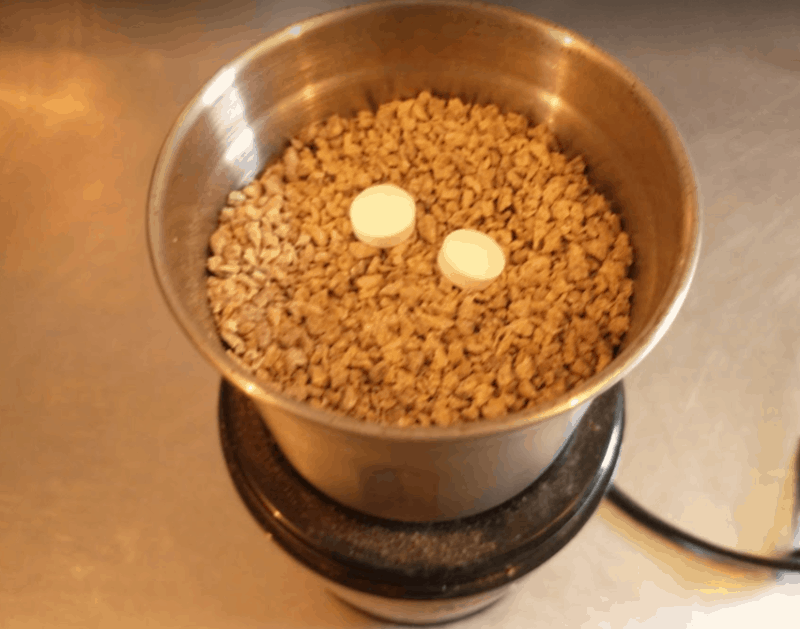
Personally, brewer’s yeast is just too expensive for me and I find the protein too difficult to manage. So, I use niacin tablets. A container of 100 niacin tablets with 500mg of niacin each costs about $10.
I take 2 pills and grind them up with a cup of feed. Since there are 48 teaspoons in a cup, that means I’ll get roughly 55mg of niacin in each teaspoon of this mix. If I need to supplement 25mg, I’ll use half teaspoons for every 2.2 pounds, or kilogram, of feed.
– Tasha’s Trick
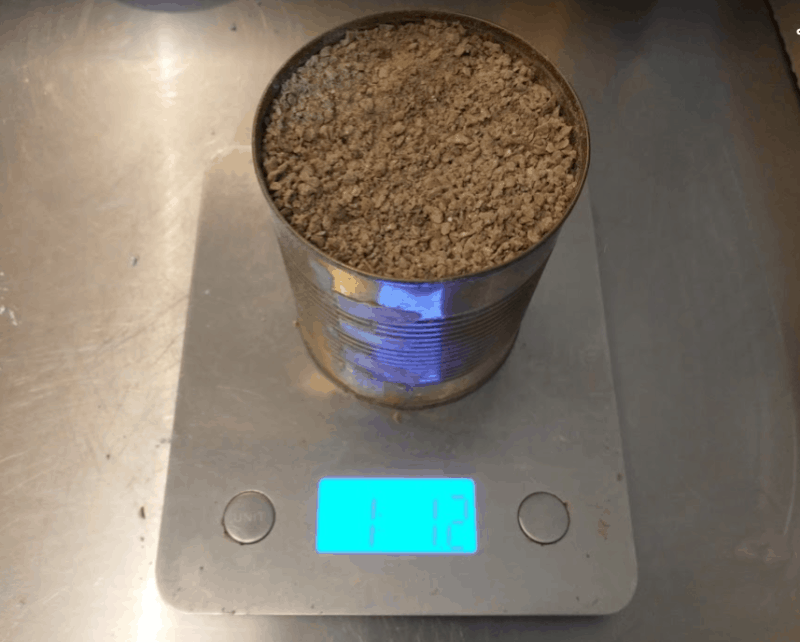
Personally, though, I don’t like to bust out my scale every time I feed my ducks. Instead, I worked out the fact that the 32-ounce can I repurposed as a feed scoop holds just about 1.1 pounds of feed. So, instead, I add one-fourth teaspoon of my homemade niacin supplement to every can full of food.
You can do the same with whatever scoop you are using. You just need to know how much a scoop weighs. Then you can do the math to figure out units of measure that make applying niacin easier for you.
Treating Niacin Deficiency
Preventing niacin deficiency is the goal. However, every so often, despite your best efforts, niacin deficiency can happen.
1. Real Life Experience
In my case, it happened with ducks that were shipped from California. Travel took nearly 4 days. When the ducks arrived, they were in shock. I got them eating and drinking and they seemed fine.
The next day, half the ducklings seemed lethargic. The following day, though, 2 of the ducklings showed signs of bowed legs. The day after, half of my ducklings had slightly bowed legs. So, I contacted the hatchery and found out what to do.
2. Niacin Water
I ground up a niacin tablet, put it in a cup of water, waited an hour, and stirred the mix-up. Then I used a dropper to force my ducklings to drink this niacin water. The dosing wasn’t perfect. Even so, the point was to get niacin into them quickly.
The following day, everyone showed signs of recovery. A few of the ducks needed an additional dose of niacin water. Still, the quick fix worked.
Just go slowly with the dropper and make sure ducks are swallowing naturally. You aren’t trying to force this down their throat, just direct into the mouth so you can make sure they get it.
Final Thoughts
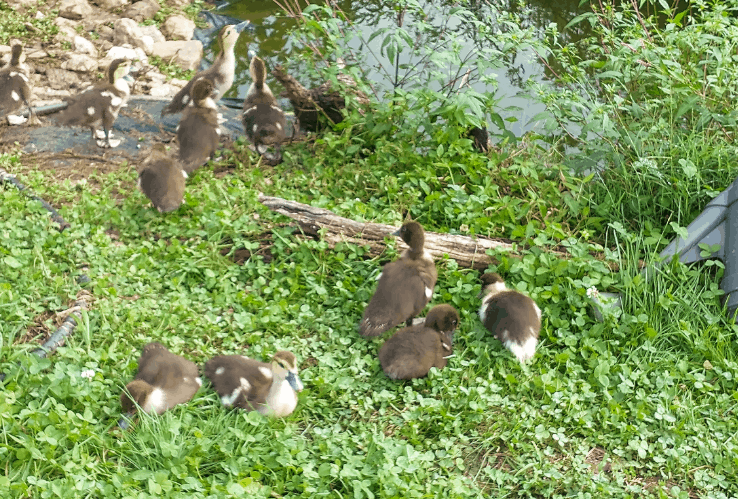
I know all of this seems very complicated if you are a beginner. It was to me when I first started out. However, once you spend a little time to do your calculations and work out easy methods for managing niacin, it becomes automatic.
Also, honestly, if you are only raising a few ducklings every few years, you may just want to order age-specific duck feed online and skip mastering the art of niacin supplementation. However, if you are raising ducklings regularly, such as for meat, you can save so much money buying less expensive poultry feed and modifying it a bit to make it right for ducks.
